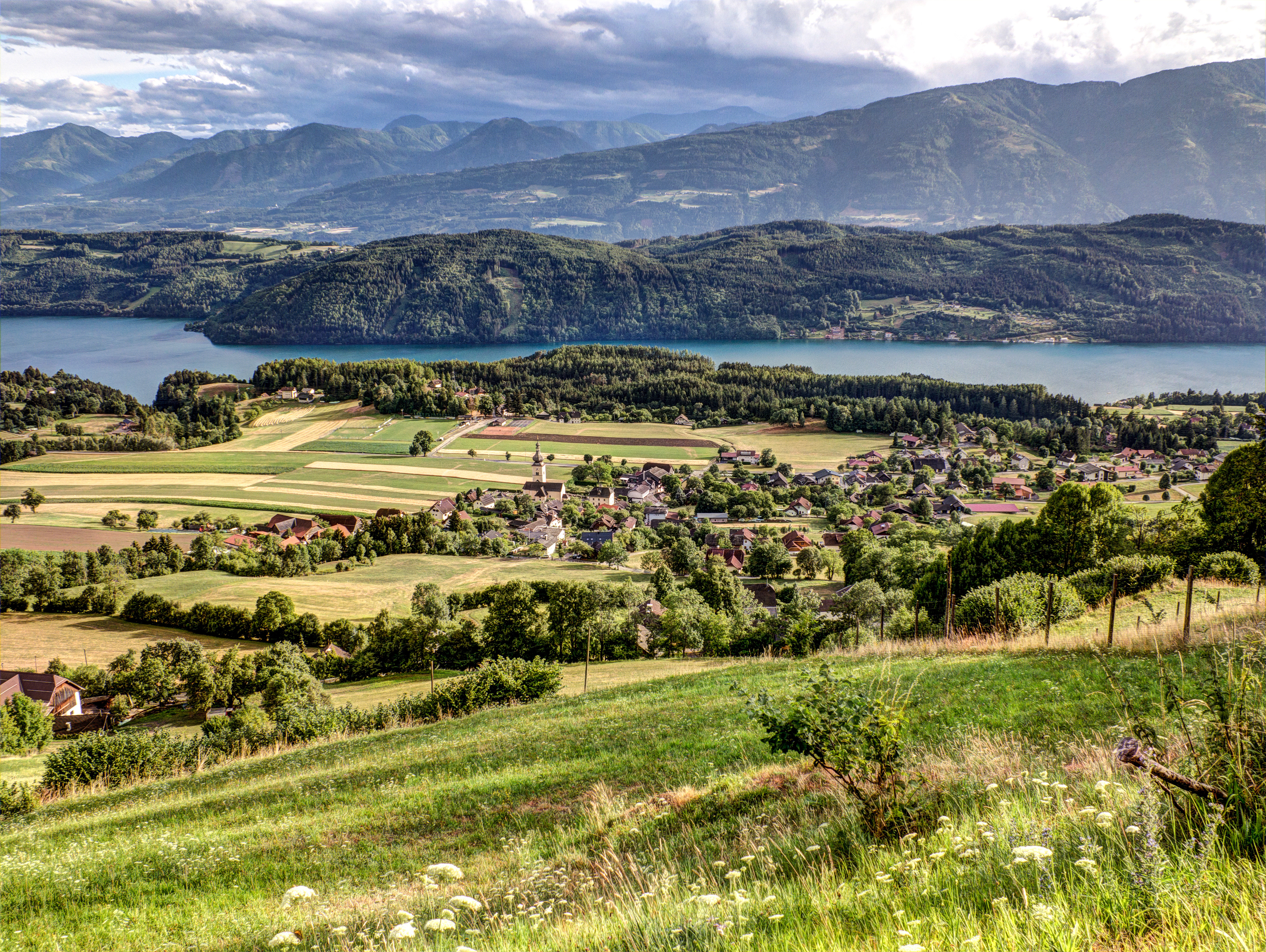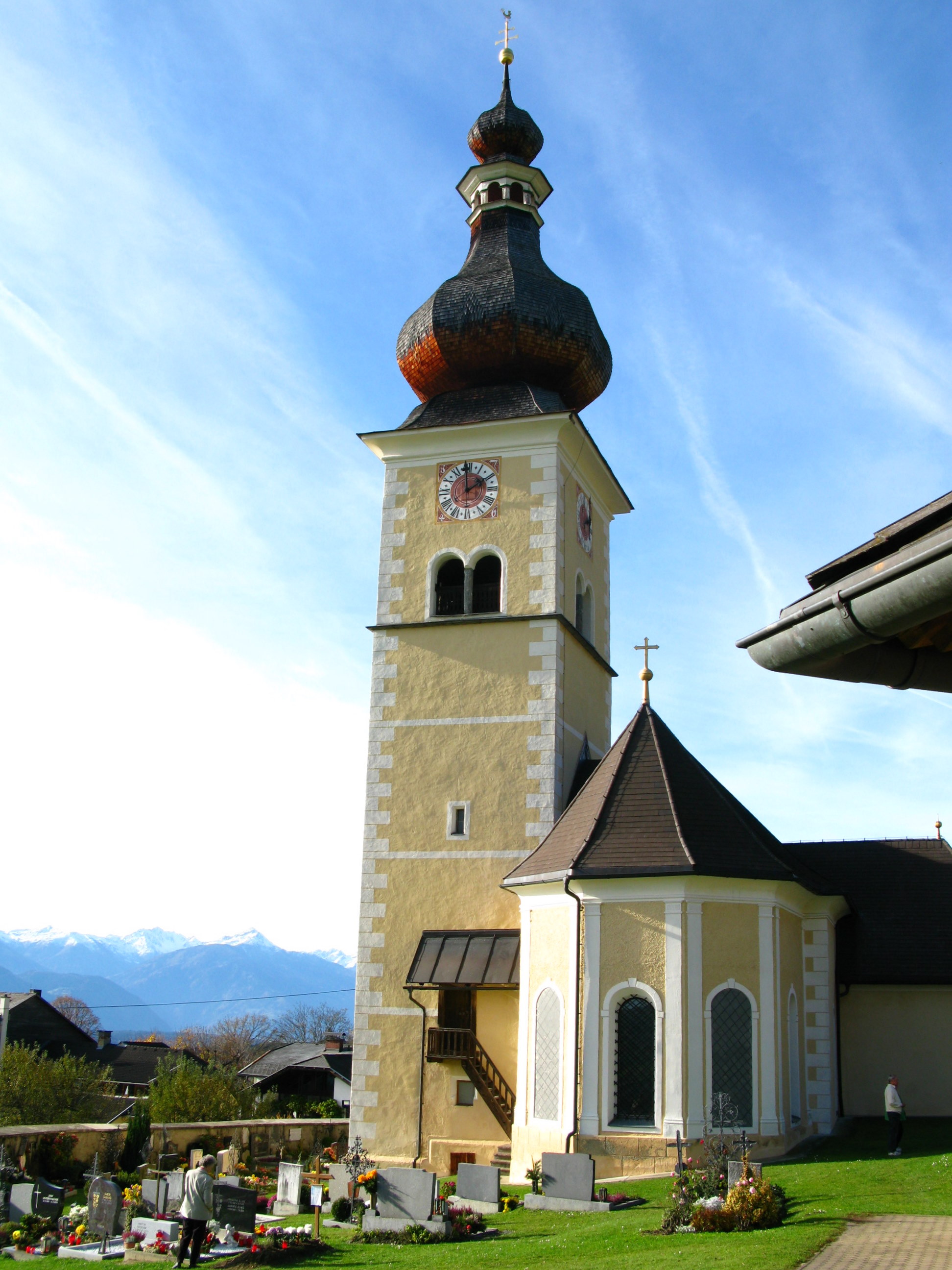Obermillstatt on:
[Wikipedia]
[Google]
[Amazon]
 Obermillstatt is a village and
Obermillstatt is a village and
 Archaeological excavations date back to the Late
Archaeological excavations date back to the Late
Municipality Millstatt
Diocese Gurk about parish Obermillstatt
Male Choral Society & Chorus Obermillstatt
Villages in Carinthia (state)
 Obermillstatt is a village and
Obermillstatt is a village and cadastral community
A cadastral community or cadastral municipality, is a cadastral subdivision of municipalities in the nations of Austria,Cadastral Template for Austria, web-pageCT-AT Bosnia and Herzegovina, Croatia, the Czech Republic, Serbia, Slovakia, Slovenia, ...
in the municipality
A municipality is usually a single administrative division having corporate status and powers of self-government or jurisdiction as granted by national and regional laws to which it is subordinate.
The term ''municipality'' may also mean the go ...
of Millstatt
Millstatt am See is a market town of the Spittal an der Drau District in Carinthia, Austria. The traditional health resort and spa town on Lake Millstatt is known for former Benedictine Millstatt Abbey, founded about 1070.
Geography
It is situate ...
in Spittal an der Drau District
Bezirk Spittal an der Drau is an administrative district (''Bezirk'') in the state of Carinthia, Austria.
Geography
With an area of the district is 2,763.99 km², it is Austria's second largest district by area (after Liezen), even larger th ...
, in Carinthia
Carinthia (german: Kärnten ; sl, Koroška ) is the southernmost States of Austria, Austrian state, in the Eastern Alps, and is noted for its mountains and lakes. The main language is German language, German. Its regional dialects belong to t ...
, Austria
Austria, , bar, Östareich officially the Republic of Austria, is a country in the southern part of Central Europe, lying in the Eastern Alps. It is a federation of nine states, one of which is the capital, Vienna, the most populous ...
.
Geography
The village lies on the southern slope of the Millstätter Alpe massif, part of theGurktal Alps
The Gurktal Alps (german: Gurktaler Alpen, sl, Krške Alpe) is a mountain range located in the Central Eastern Alps in Austria, named after the valley of the Gurk river. The range stretches west to Lake Millstatt and east to Neumarkter Sattel ( ...
(Nock Mountains
The Nock Mountains (german: Nockberge or ''Nockgebirge'') are the westernmost and highest mountain range of the Gurktal Alps in Austria, spread over parts of the federal states of Carinthia, Salzburg and Styria. Their appearance is characterised b ...
), at above sea level, on a plateau about above Lake Millstatt
A lake is an area filled with water, localized in a basin, surrounded by land, and distinct from any river or other outlet that serves to feed or drain the lake. Lakes lie on land and are not part of the ocean, although, like the much larger ...
. It is reachable via the B 98 highway at Millstatt centre ( away) or via L 17 from Dellach or Seeboden
Seeboden am Millstätter See ( sl, Jezernica ) is a market town in Spittal an der Drau District in Carinthia, Austria.
Geography
The municipal area stretches from the western shore of Millstätter See to the town boundary of the district capit ...
, in a distance to the Tauern Autobahn
The Tauern Autobahn (A 10) is an Autobahns of Austria, autobahn (motorway) in Austria. It starts at the Salzburg junction with the West Autobahn (A1), runs southwards, crosses the Hohe Tauern, Tauern mountain range on the main chain of the Alps an ...
(A10) of ).
Several Alpine farms surround the structured village centre, with 492 inhabitants in total.Austrian Census 2001 Because of the lack of local undertakings, a large proportion of the working population commute daily. A major employer since 1907 is the RHI refractory company in away place Radenthein
Radenthein ( sl, Radenče ) is a town in Spittal an der Drau District, in the Austrian state of Carinthia.
Geography
The town is situated in the Gegend valley (''Gegendtal'') of the Nock Mountains range (part of the Gurktal Alps), stretching to ...
. Parts of the Magnesite
Magnesite is a mineral with the chemical formula (magnesium carbonate). Iron, manganese, cobalt, and nickel may occur as admixtures, but only in small amounts.
Occurrence
Magnesite occurs as veins in and an alteration product of ultramafic ro ...
occurrence on Millstätter Alpe belong to the area of Obermillstatt.
History
Bronze Age
The Bronze Age is a historic period, lasting approximately from 3300 BC to 1200 BC, characterized by the use of bronze, the presence of writing in some areas, and other early features of urban civilization. The Bronze Age is the second pri ...
(1200-1000 BC), when the Millstätter Berg plateau was settled by Illyrian, later also Celtic
Celtic, Celtics or Keltic may refer to:
Language and ethnicity
*pertaining to Celts, a collection of Indo-European peoples in Europe and Anatolia
**Celts (modern)
*Celtic languages
**Proto-Celtic language
* Celtic music
*Celtic nations
Sports Fo ...
tribes, who had moved into the area from the northwestern Balkans
The Balkans ( ), also known as the Balkan Peninsula, is a geographical area in southeastern Europe with various geographical and historical definitions. The region takes its name from the Balkan Mountains that stretch throughout the who ...
. In the Roman
Roman or Romans most often refers to:
*Rome, the capital city of Italy
*Ancient Rome, Roman civilization from 8th century BC to 5th century AD
*Roman people, the people of ancient Rome
*''Epistle to the Romans'', shortened to ''Romans'', a letter ...
province of Noricum
Noricum () is the Latin name for the Celts, Celtic kingdom or federation of tribes that included most of modern Austria and part of Slovenia. In the first century AD, it became a Roman province, province of the Roman Empire. Its borders were th ...
(from 16 BC), a Roman road
Roman roads ( la, viae Romanae ; singular: ; meaning "Roman way") were physical infrastructure vital to the maintenance and development of the Roman state, and were built from about 300 BC through the expansion and consolidation of the Roman Re ...
led along the Millstätter Berg slopes from the local capital Teurnia
Teurnia (later Tiburnia) was a Roman city (''municipium''). Today its ruins lie in western Carinthia. In late antiquity it was also a bishop's see, and towards the end of Roman times it was mentioned as the capital of the province of Noricum me ...
towards the Turracher Höhe Pass
Turracher Höhe, also called Turracherhöhe, refers to a village, a pass across the Alps, and a countryside in the Gurktal Alps in Austria. The village and the Turracher Lake at the pass, which both share the same name, are separated by the bord ...
. During the Slavic settlement of the Eastern Alps The settlement of the Eastern Alps region by early Slavs took place during the 6th to 8th centuries.
It is part of the southward expansion of the early Slavs which would result in the characterization of the South Slavic group, and would ultimatel ...
from the 6th century AD in the Principality of Carantania
Carantania, also known as Carentania ( sl, Karantanija, german: Karantanien, in Old Slavic '), was a Slavic principality that emerged in the second half of the 7th century, in the territory of present-day southern Austria and north-eastern ...
, several settlements arose on the plateau, which came under Bavarian and Frankish
Frankish may refer to:
* Franks, a Germanic tribe and their culture
** Frankish language or its modern descendants, Franconian languages
* Francia, a post-Roman state in France and Germany
* East Francia, the successor state to Francia in Germany ...
influence in the late 8th century.
When about 1070 the Bavarian Aribonids The Aribonids were a noble family of probably Bavarian origin who rose to preeminence in the Carolingian March of Pannonia and the later Margraviate of Austria (''marcha orientalis'') in the late ninth and early tenth centuries. The dynasty is name ...
established Millstatt Abbey
Millstatt Abbey (german: Stift Millstatt) is a former monastery in Millstatt, Austria. Established by Benedictine monks about 1070, it ranks among the most important Romanesque buildings in the state of Carinthia. The Benedictines were succeeded b ...
, they vested it with extensive landed property, probably including a church in Obermillstatt ("Upper Millstatt"). However, the Catholic parish church St John the Baptist
John the Baptist or , , or , ;Wetterau, Bruce. ''World history''. New York: Henry Holt and Company. 1994. syc, ܝܘܿܚܲܢܵܢ ܡܲܥܡܕ݂ܵܢܵܐ, Yoḥanān Maʿmḏānā; he, יוחנן המטביל, Yohanān HaMatbil; la, Ioannes Bapti ...
was not mentioned until 1205; the present building was erected under the Jesuit
, image = Ihs-logo.svg
, image_size = 175px
, caption = ChristogramOfficial seal of the Jesuits
, abbreviation = SJ
, nickname = Jesuits
, formation =
, founders ...
rule in 1614. Its Baroque
The Baroque (, ; ) is a style of architecture, music, dance, painting, sculpture, poetry, and other arts that flourished in Europe from the early 17th century until the 1750s. In the territories of the Spanish and Portuguese empires including t ...
furnishing includes a square groin vault apse and a high altar from around 1720. Situated on the slope above the village centre, the church can be widely seen by its massive tower with the big onion dome. For 84 years, from 1889 to 1973, Obermillstatt was a municipality in its own right.
In adjacent Matzelsdorf is the small pilgrimage church Maria Schnee ( Our Lady of the Snows), which was first mentioned in 1177. The small but richly decorated nave has a Late Gothic lierne vault from the 16th century and Baroque frescoes of the Madonna from about 1716. The retable of the altar with a carving work of the coronation of Mary
The Coronation of the Virgin or Coronation of Mary is a subject in Christian art, especially popular in Italy in the 13th to 15th centuries, but continuing in popularity until the 18th century and beyond. Christ, sometimes accompanied by God th ...
probably originates from around 1500. Near Laubendorf is the foundation of a small Early Christian
Early Christianity (up to the First Council of Nicaea in 325) spread from the Levant, across the Roman Empire, and beyond. Originally, this progression was closely connected to already established Jewish centers in the Holy Land and the Jewish d ...
church from the 5th century, which has been preserved in quite good condition. In the place of the altar is a former reliquary
A reliquary (also referred to as a ''shrine'', by the French term ''châsse'', and historically including ''wikt:phylactery, phylacteries'') is a container for relics. A portable reliquary may be called a ''fereter'', and a chapel in which it i ...
, covered by a Roman tombstone. The church probably was built as a refuge for the diocese of nearby Teurnia in the days of the Decline of the Roman Empire
The fall of the Western Roman Empire (also called the fall of the Roman Empire or the fall of Rome) was the loss of central political control in the Western Roman Empire, a process in which the Empire failed to enforce its rule, and its vas ...
. It finally was abandoned around 600 when the Slavic Carantanians had entered the region.
Sources
External links
{{commons category, ObermillstattMunicipality Millstatt
Diocese Gurk about parish Obermillstatt
Male Choral Society & Chorus Obermillstatt
Villages in Carinthia (state)